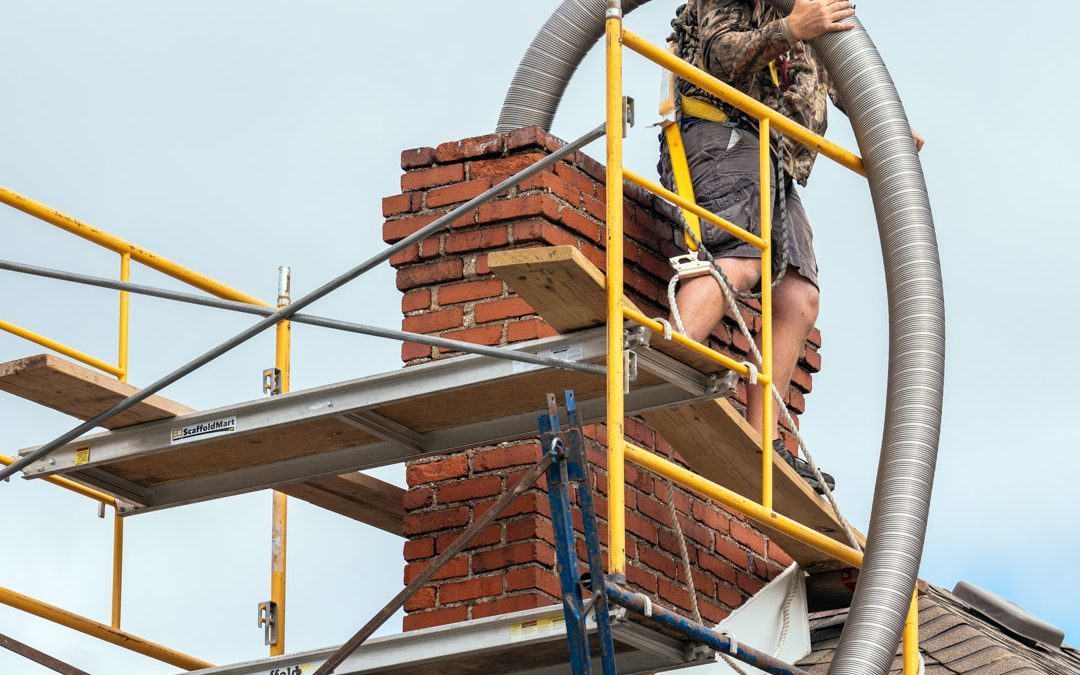There are three different types of chimney liners: clay tile chimney liners, cast-in-place liners and stainless steel flue liners. What type of liner is best depends on when and why it is installed.
Stainless Steel Relining
A clay tile liner is a good choice when you are building a new fireplace because the materials are inexpensive, and the liner will have a long life. It is not a good choice for a replacement liner. It is incredibly challenging and expensive to install a new clay tile liner or repair an old one after the chimney has been built.
A stainless steel liner is the best choice if you have a prefabricated fireplace or are installing a fireplace insert. It is easy to install and can be connected directly to your heating appliance. It is also the most likely to meet state and local venting requirements for your new appliance.
A Cast-in-place liner is the best choice if you have a masonry fireplace with a clay tile liner that is failing or if you have a chimney with structural problems. We recommend AHRENS Chiming Lining. The cast-in-place chimney lining is made with an insulated mortar-like mixture that is perfect for filling in deteriorating mortar joints and reinforcing the chimney’s structure.
Stainless Steel Relining
We offer a large selection of flexible chimney liners, such as 316Ti Rock-flex Stainless Steel Multi-fuel liners, Smooth wall, Pre-insulated, Oval, square and rectangle. Install a round or rectangular 316 grade stainless steel liner replacing your old terracotta clay flue tiles. All components are high quality stainless steel and made in the USA, UL Certified, and have Lifetime warranties. Our liners are code compliant for masonry chimneys. There are 4 reasons why a chimney specialist would recommend a new liner:
- The clay tile liner is damaged or deteriorating
A damaged flue liner is a safety risk because gaps and cracks in the liner can allow carbon monoxide and hot embers to escape from the chimney. This increases the risk of carbon monoxide poisoning and a house fire. A deteriorating liner may also be a symptom of greater structural damage that could increase exponentially if nothing is done. Installing a new liner is the simplest and best solution.
- The chimney has a condensation problem
If flue temperatures are too low, it can cause condensation in the flue which contributes to corrosion. It is also a symptom of poor airflow which will result in inefficient fires that produce less heat and generate more creosote buildup.
- The fireplace has been converted to burn a different fuel or you’ve had a fireplace insert installed
Whether you have converted a traditional wood-burning fireplace into a gas fireplace or had a wood-burning fireplace insert installed, you need to have a new liner installed. Different types of fuel and fireplace inserts have different venting requirements than traditional fireplaces. In most cases, it is necessary to have a metal flue liner installed that connects directly to the new appliance.
- The chimney is unsafe
If your chimney does not have a liner or the liner is warped, corroded or deteriorating, a new flue liner should be installed to protect your home.
If you have any other questions, leave them in the comment section below! If you want to speak to a chimney specialist, give us a call!
Contact us
If our CSIA Certified Chimney Sweep determines that your chimney needs swept, we will take the utmost care to keep your living space completely clean. Proudly Serving Mercer County, Somerset County, Hunterdon County, & Surrounding Areas.
St John Chimney Sweeps Address 1613 Reed Rd D1, Pennington, NJ 08534
Website http://www.stjohnchimneysweeps.com/
Email: stjohnchimneysweeps@verizon.net Phone Number: (609) 737-0133

